
Feature Article
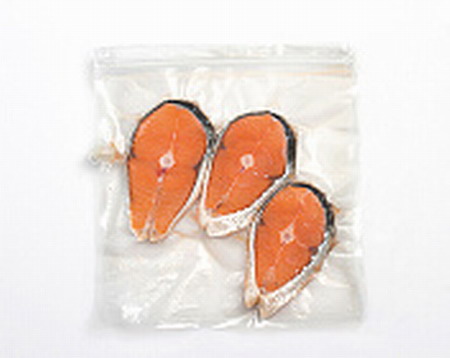
Slow Cooking and Food Safety
Slow cooking has started to emerge in Hong Kong in recent years, but in fact it has been popular for a long time in Europe and the United States. The most common way of slow cooking is sous vide cooking. It usually involves cooking food in vacuum-sealed plastic pouches at exact temperatures (generally in the range of 47°C to 88°C) for a relatively long period of time until the food is done.
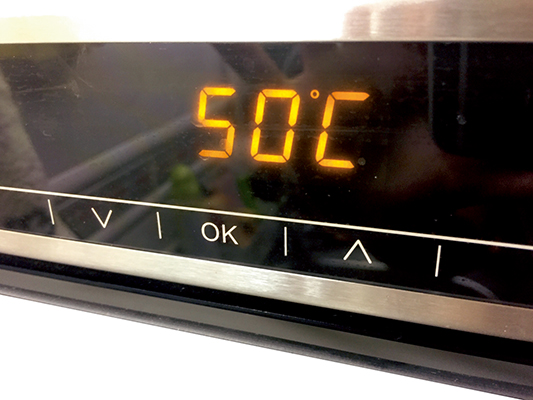
Sous vide cooking
Sous vide cooking retains the moisture and natural flavour of food. For example, it inhibits off-flavours from oxidation and prevents evaporative losses of moisture and flavour during cooking. The precise control over cooking temperature makes it easier to achieve the desired level of doneness and turns tough cuts of meat tender. Moreover, the vacuum sealing allows heat to be efficiently transferred to the food during cooking and extends the shelf-life of food by eliminating possible cross-contamination during storage.
What are the risks associated with sous vide cooking?
Nevertheless, there are food safety risks associated with sous vide cooking. Firstly, food held at temperature danger zone (4°C to 60°C) for a prolonged period of time allows pathogenic bacteria to grow, especially Clostridium perfringens . The heat resistant C. perfringens spores which survive cooking temperatures can germinate and the vegetative cells will grow to large numbers in vacuum packed food under improper temperature control. Secondly, for sous vide food stored under refrigeration for an extended period, the anaerobic (absence of oxygen) and refrigerated conditions facilitate the growth of certain facultative anaerobes (e.g. Listeria monocytogenes ) and anaerobes (e.g. Clostridium botulinum ). Last but not least, the temperatures used in sous vide cooking may result in undercooked food (especially fish) and any pathogenic bacteria or parasites are likely to survive.
Advice to the trade
- During cooking, the core of sous vide food should reach a temperature of at least 75°C for 30 seconds or an equivalent temperature/time combination. However, the core temperature of food should not be less than 60°C for 45 minutes.
- Use fresh ingredients of high quality, e.g. sashimi grade fish from reliable sources for enhanced food safety.
- Only use food grade plastic pouches certified as suitable for cooking by the manufacturer when it comes to sous vide cooking.
Get the Temperature Right
How to Handle Leftovers?
- Leftovers should be cooled promptly and stored in the refrigerator within two hours.
- Food must be reheated thoroughly until its core temperature reaches 75°C or above for at least 30 seconds before consumption.
- Leftovers should not be stored in the refrigerator for more than three days, nor should they be reheated more than once.
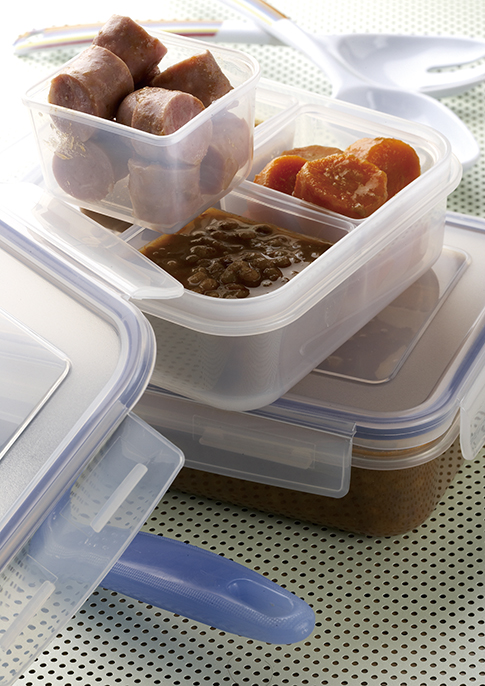
Readers' Corner
Pregnant Women and Young Children Advised to Avoid Eating Predatory Fish
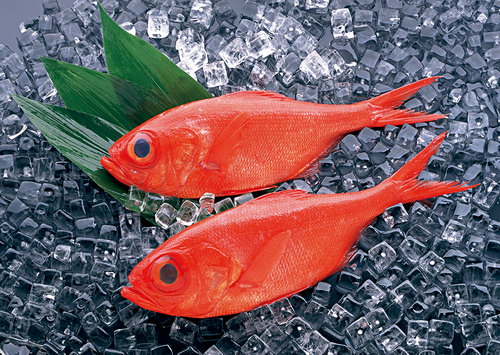
Tasting fresh and sweet, fish is a must-have item in many people's everyday diet. In fact, fish contains many nutrients essential for the growth and development of our body, such as omega-3 fatty acids and high-quality proteins, and can provide pregnant women, foetuses and infants with the nutrients they need. However, pregnant women, women planning pregnancy and young children should be particularly vigilant in avoiding the consumption of large or predatory fish, such as tuna (especially the bigeye and bluefin species), alfonsino, shark, swordfish, marlin, orange roughy and king mackerel, because they may contain higher levels of methylmercury, a heavy metal, than other types of fish.
As a result of human activities, such as mining and industrial emissions, mercury may be released and transformed into methylmercury by the bacteria in water. As a more toxic form of mercury, methylmercury is more easily absorbed by living organisms and contaminates fish. As methylmercury accumulates in fish bodies progressively up the food chain, longer-living and predatory fish tend to contain higher levels of methylmercury. If women are exposed to high levels of methylmercury before and during pregnancy through consumption of food such as predatory fish, the methylmercury may be passed on to the foetus through the placenta and harm the foetus' developing nervous system. Young children whose brains are still developing may be more susceptible than adults to the adverse effects of methylmercury, which include a reduction in intelligence quotient (IQ).
The public is advised to maintain a balanced and diverse diet and to consume a variety of fish as part of a healthy diet. Pregnant women and young children should particularly opt for smaller fish to minimise the health risks posed to the foetus, infants and young children as a result of excessive intake of metallic contaminants. Generally speaking, smaller fish (below one catty), farmed fish and freshwater fish contain lower levels of methylmercury and are safe for consumption.
Online Sale of Food
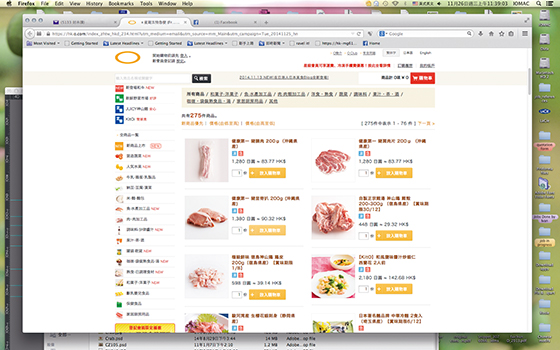
With the growing popularity of online shopping, more and more online stores are putting up for sale a variety of products on the Internet. Traders who intend to sell food online should be aware that both sale activities on the Internet and in the conventional business mode are regulated by relevant legislation in Hong Kong, including food safety regulations pertaining to the importation, advertisement and sale of food products.
Traders who consider importing high-risk food commodities such as chilled/frozen meat or chilled/frozen poultry meat are required to apply for an import licence from the Centre for Food Safety (CFS). Only meat, poultry or game from approved sources and with official certificates issued by recognised competent authorities can be imported. In addition, traders are required to apply to the CFS for the importation of milk, milk beverage or frozen confection from approved sources outside Hong Kong.
Moreover, if prepackaged foods are to be sold at online stores, traders should ensure that the requirements on food labelling under the Food and Drugs (Composition and Labelling) Regulations (Cap. 132W) regarding the sale, advertisement and display of food are complied with. Generally speaking, the labelling of prepackaged foods should set out genuine information about the food, such as its food name, a list of ingredients, the durability indication (i.e. the "use by"(此日期或之前食用) date or the "best before"(此日期前最佳) date), a statement of special conditions for storage or instructions for use, the name and address of manufacturer or packer, the count, weight or volume of the food, as well as the nutrition labelling.
Other than the above requirements, any person who carries on a food importation or distribution business must register as a food importer or a food distributor and keep records relating to the movements of food as stipulated in the Food Safety Ordinance (Cap. 612). Traders should also observe the primary food legislation in Hong Kong laid down in Part V of the Public Health and Municipal Services Ordinance (Cap. 132) and its subsidiary legislation.
When it comes to shopping foods on the Internet, members of the public should be mindful that transactions made outside Hong Kong might be subject to risk. For instance, the coverage of consumer protection abroad can be different from that in Hong Kong. Extra caution should be exercised when shopping those high-risk food commodities online.
News on New Dishes
Safety Tips on Preparing "Seafood and Bean Curd with Salted Egg Yolk in Stone Pot"
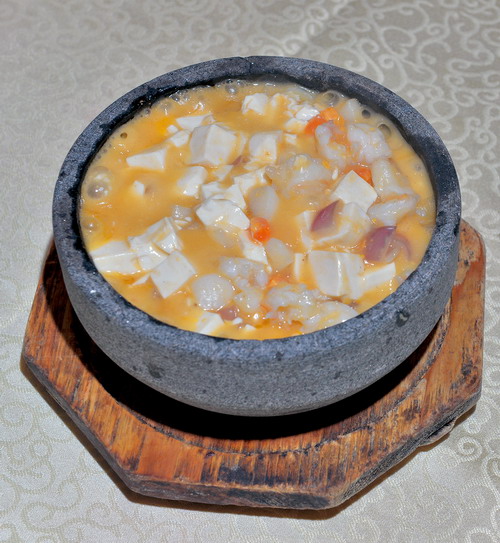
Although bean curd looks ordinary, it can be cooked in the easiest way and is the best match for other ingredients. It plays an important role in many famous traditional Chinese dishes. In this issue, we are very honoured to have invited Mr CHAN Kin-fai, Executive Chef of "Wealth Banquet", a signatory of the Food Safety Charter, to demonstrate how to prepare "Seafood and Bean Curd with Salted Egg Yolk in Stone Pot", a popular dish with bean curd as the main ingredient.
| Preparation Steps | Small Tips, Big Wisdom | ||
|---|---|---|---|
 |
Receiving | First, purchase bean curd, shrimps, scallops, onion, salted eggs and other ingredients from approved and reliable sources. | Upon receipt of the ingredients, check with meticulous care to ensure their freshness. Bean curd should be kept under refrigeration at 4°C or below and frozen seafood at -18°C or below before use. |
 |
Defrosting | Defrost the frozen scallops and frozen shrimps in a refrigerator at 4°C or below. | Defrosting in a refrigerator at 4°C or below not only ensures food safety but also keeps the fresh taste of seafood. |
 |
Rinsing | Rinse all ingredients thoroughly. | Remove surface impurities such as sand and mud. |
 |
Cutting | Dice bean curd, shrimps, scallops, onion and the boiled salted egg yolk. Set aside. | Dicing the ingredients makes it easier to cook them thoroughly and hence shortens the cooking time. |
 |
Blanching | Blanch the diced scallops and shrimps in boiling water for a few seconds. Drain them dry and set aside. Put bean curd cubes into the broth and cook for a few seconds. Ladle out and set aside. | Blanching is a method of cooking which can remove the frozen taste and shorten the cooking time at later stages. It can also ensure that ingredients are cooked thoroughly. |
 |
Stir-frying | Heat oil in wok. Add butter and stir-fry the diced salted egg yolk and onion until fragrant. Then add the diced shrimps and scallops, cornflour paste and an appropriate amount of seasoning. Finally, add bean curd cubes and the broth and stir-fry until done. Ready to serve. | Brisk stir-frying in wok makes ingredients more delicious and ensures that they are cooked thoroughly. |
Tips from Chef CHAN:
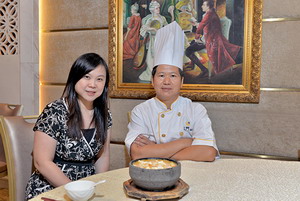
- The use of fresh ingredients is the basic requirement for cooking tasty dishes. "Wealth Banquet" purchases ingredients from reputable suppliers. Orders are placed according to the estimated consumption of that day to ensure that fresh ingredients are used every day.
- Bean curd, which tastes bland by itself, readily absorbs the flavour of other food and spices. Therefore, broth and other ingredients are used to enhance the flavour.
- Handle the bean curd gently with appropriate control of the heat and the duration of cooking, or the bean curd will crumble.
- The delicate, tender and soft texture of packaged bean curd makes it suitable for preparing foods like thin or thick soups. As bean curd is perishable, keep it refrigerated until preparation of the dish in order to ensure its freshness.
- A stone pot holds heat well. Serving food in a heated stone pot keeps the food warm. Even if you eat slowly, the food will not cool off too early.
Food Safety Plan Corner
Seafood and Bean Curd with Salted Egg Yolk in Stone Pot

Ingredients:
Bean curd, shrimps, scallops, onion and salted egg
Seasoning:
Broth and cornflour
Steps:
- Defrost the frozen de-shelled shrimps and frozen scallops in a refrigerator at 4°C or below.
- Rinse all ingredients thoroughly.
- Dice bean curd, shrimps, scallops and onion. Set aside. Boil the salted egg, then separate the egg yolk from the egg white. Dice the egg yolk and set aside.
- Blanch the diced scallops and shrimps in boiling water for a few seconds. Drain them dry and set aside. Put bean curd cubes into the broth and cook for a few seconds. Ladle out and set aside.
- Heat oil in wok. Add butter and stir-fry the diced salted egg yolk and onion until fragrant. Then add the diced shrimps and scallops, cornflour paste and an appropriate amount of seasoning. Finally, add bean curd cubes and the broth and bring to the boil. Serve in a heated stone pot.
Production Process
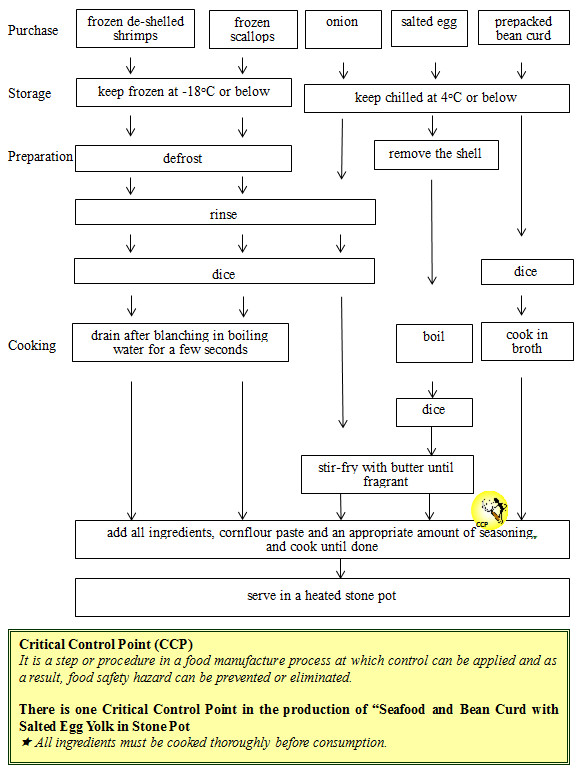
Briefing of Activities
The 49th Hong Kong Brands and Products Expo
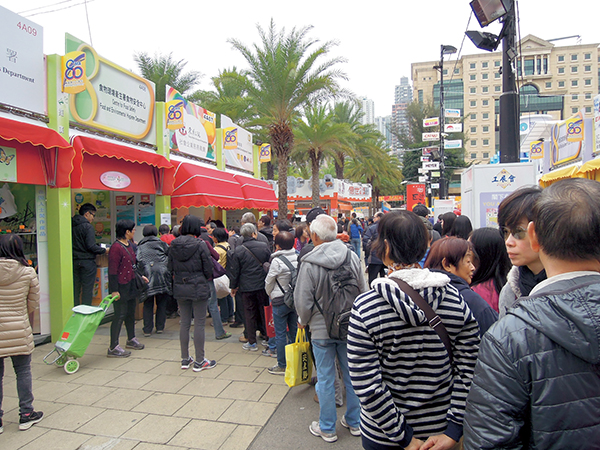

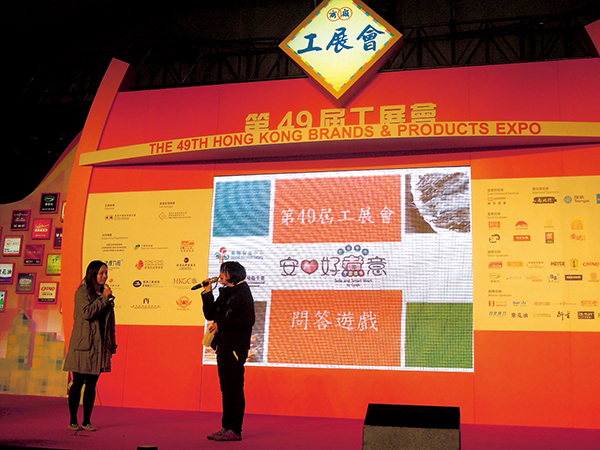
The 49th Hong Kong Brands and Products Expo organised by the Chinese Manufacturers' Association of Hong Kong was held from 13 December 2014 to 5 January 2015 at Victoria Park, Hong Kong. The CFS joined the event as one of the exhibitors with a view to disseminating food safety information among the public.
To promote the theme of "Safe and Smart Ways to Cook", visitors were invited to play interactive games at the CFS's booth. In addition, there were quizzes on nutrition labelling and the dietary habit of "3-low" (i.e. low salt, low sugars and low fat) to convey food safety and healthy eating messages to participants.
The CFS's booth also provided information on food safety and nutrition labelling, as well as food safety tips for pregnant women and travellers. Besides briefing visitors about the display panels, staff of the CFS also distributed leaflets and pamphlets to them.
Upcoming Activities
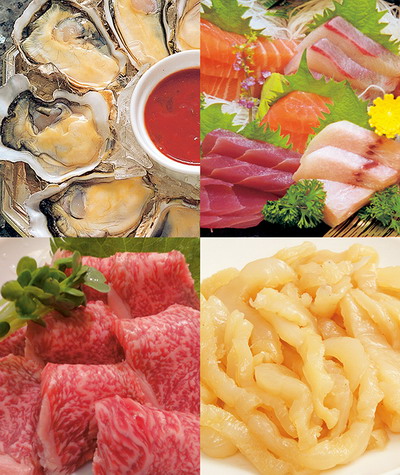
Food Safety Talks on "High-risk Food"
In response to the Western Pacific Regional Food Safety Strategy (2011) of the World Health Organization (WHO), the CFS will organise food safety talks under the theme of "High-risk Food" in all districts in Hong Kong. The objective is to promote food safety awareness among food handlers engaged in handling high-risk food (such as sushi, sashimi, as well as oysters and meat to be consumed raw). The talks will be conducted in Cantonese and admission is free.
Food premises will receive invitation letters and enrollment forms providing details on the dates, time and venues of the talks to be held in respective districts. Interested food handlers may call the CFS on 2867 5147 for enquiries from 9:00 am to 12:00 noon and 2:00pm to 5:00 pm on Monday to Friday (except public holidays).
Food Safety Q & A
Q: How to reduce the risk of listeriosis?
A: Listeria monocytogenes, universally found in the environment (for example in soil and water), is a bacterium that can cause foodborne diseases. Such bacterium can be easily destroyed by cooking but unlike other food poisoning bacteria, it can continue to grow slowly at temperatures as low as 0°C. Therefore, refrigerated ready-to-eat food with long shelf-life (more than five days) is a potential high-risk item for listeriosis. Prolonged storage of food in a refrigerator may allow sufficient time for L.monocytogenes to multiply gradually. Consuming such contaminated food without further cooking may lead to infection.
Although listeriosis causes few or no symptoms in healthy people, it may pose severe effects on newborns, pregnant women, the elderly and immunocompromised individuals. Symptoms usually appear within three to seventy days (with a median incubation period of three weeks) after consuming contaminated food. These include flu-like conditions, nausea, vomiting, abdominal cramps, diarrhoea, headache, constipation and persistent fever. Serious infections are manifested by septicaemia, meningitis and even death.
Prevention of Listeria infections is of major concern in pregnant women. Even though symptoms may be relatively mild in mothers, the passage of L.monocytogenes through the placenta may cause miscarriage, still birth, premature birth or serious illnesses in the newborns.
To minimise the risk of listeriosis, the following precautions should be taken by the trade:
- Maintain good food and personal hygiene – maintain good hygiene and food handling practices in food manufacturing plants, food premises and retail establishments.
- Handle ready-to-eat food with care – avoid post-cooking contamination of ready-to-eat food.
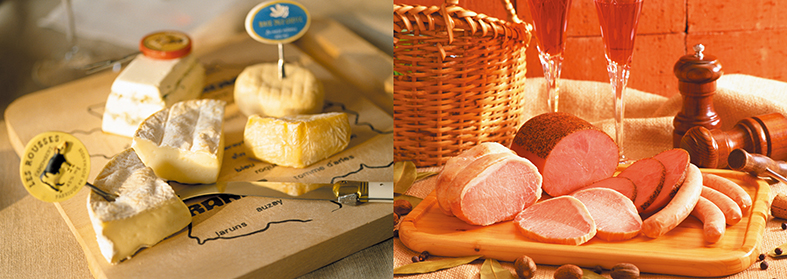
Truth against Fallacy
Do Eggs Need to be Thoroughly Washed Before Storage?
Contamination of eggs

Eggs are not laid in a sterile environment. They may be maternally infected by bacteria (such as Salmonella ) from the reproductive tissues prior to shell formation, or carry bacteria introduced from faecal contamination as the eggs are laid. Eggs may also be contaminated through environmental vectors, such as chicken farmers, pets and rodents. Bacteria may enter the egg contents through pores or cracks on egg shells. Although there are numerous pores (ranging from 6000 to 10000) on an egg shell, there is an outer layer of protection called cuticle that can help retard the penetration of bacteria on the egg shell into the egg contents. As eggs with cracks on the shells allow the entry of bacteria into the eggs, members of the public should not purchase cracked eggs. In addition, bacteria may contaminate egg fluids the moment when the eggs are broken open.
Should eggs be washed?
Since there may be bacteria on the surface of eggs, should eggs be washed? Under normal circumstances, there is no need to do so. Any process that wets the shells may facilitate the entry of microorganisms as water enters the pores together with microorganisms by capillary action. Water left on shell surface may also contribute to the continued survival of microorganisms on egg shells. In addition, improper washing may damage the cuticle.
Many eggs available for sale on the market have gone through the process of cleansing during commercial egg processing. The cleansing work needs to be conducted in a specific way in order to minimise the entry of microorganisms. The eggs are washed as soon as possible after they are laid and eggs with cracks are removed. The surface of the eggs is sanitised with special detergents that do not damage the cuticle. Water used for washing should be warmer than the temperatures of eggs, but not too hot that will damage the cuticle. Cooler water will facilitate the entry of bacteria into the eggs. After washing, the eggs are dried immediately. In some cases, the eggs may be sprayed with a layer of mineral oil to replace the original cuticle that may be lost during washing.
Advice to the trade
- Store shell eggs under refrigeration.
- Avoid cross-contamination between raw eggs and other food. The food contact surface and utensils used for preparation of raw eggs should be cleaned thoroughly.
- Choose pasteurised egg products or dried egg powder to prepare dishes not requiring heat treatment, in particular ready-to-eat desserts.
- Avoid using and selling cracked eggs as they are more likely to be contaminated and thus present a higher health risk.
Brain Gym
Matching Game
|
|
[Answers: 1b, 2d, 3a, 4c]
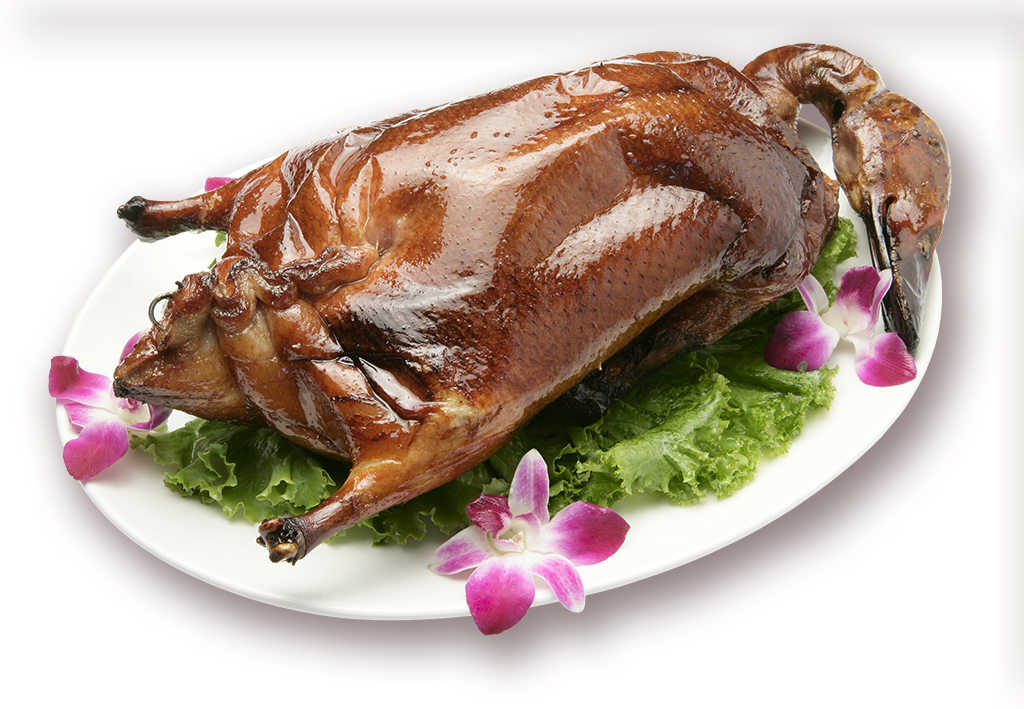
Enquiry and Subscription
Printed copies of the Food Safety Bulletin can be obtained from the Communication Resource Unit located at 8/F, Fa Yuen Street Municipal Services Building, 123A Fa Yuen Street, Mong Kok, Kowloon. For enquiry, please call 2381 6096. The public may also visit the website of the CFS ( http://www.cfs.gov.hk ) for the online version.